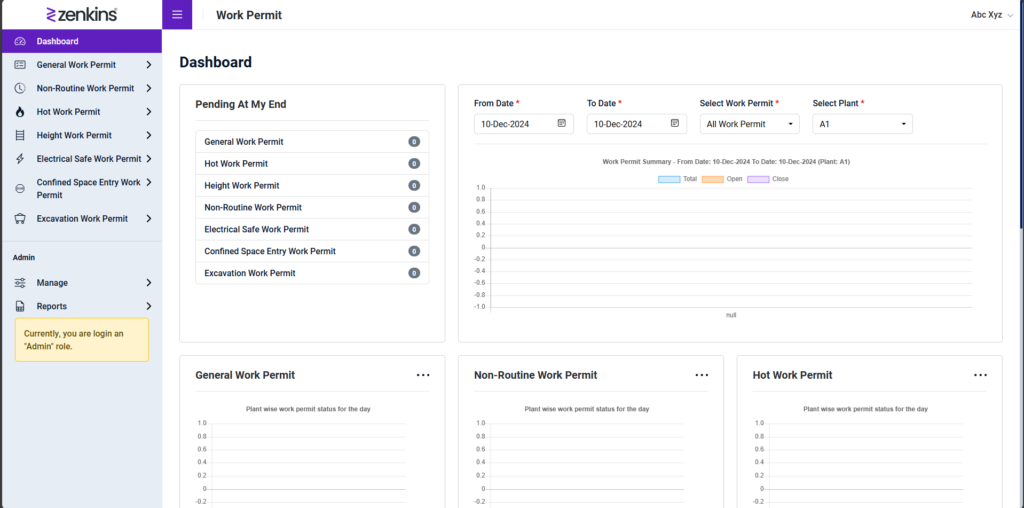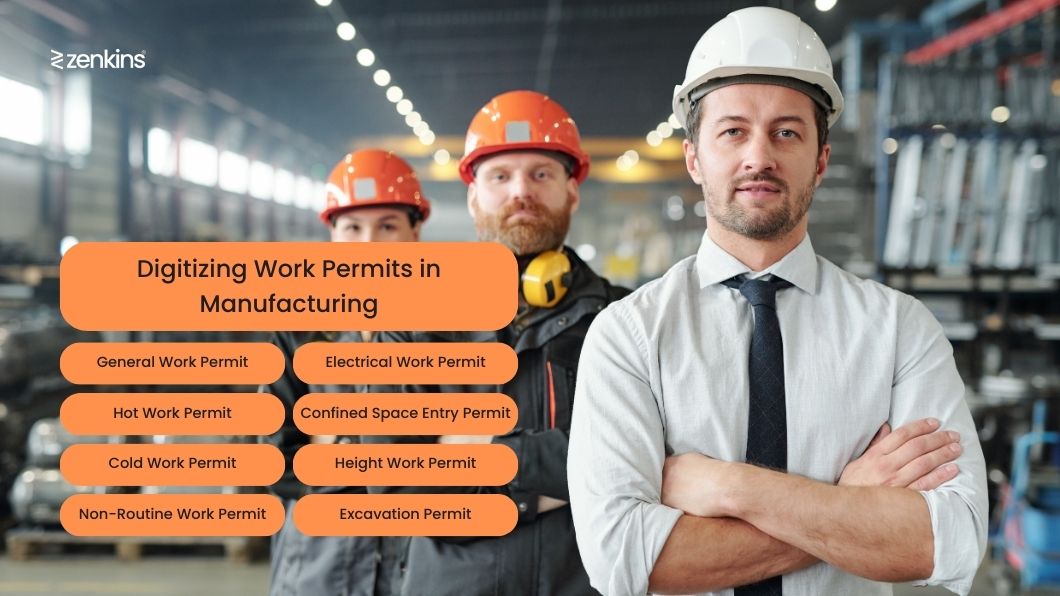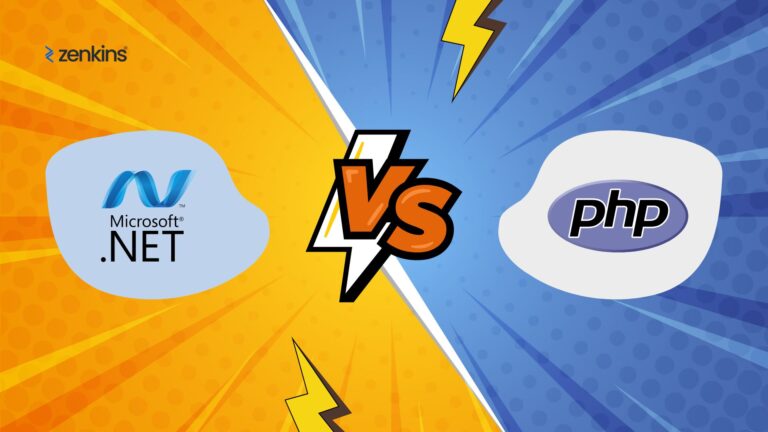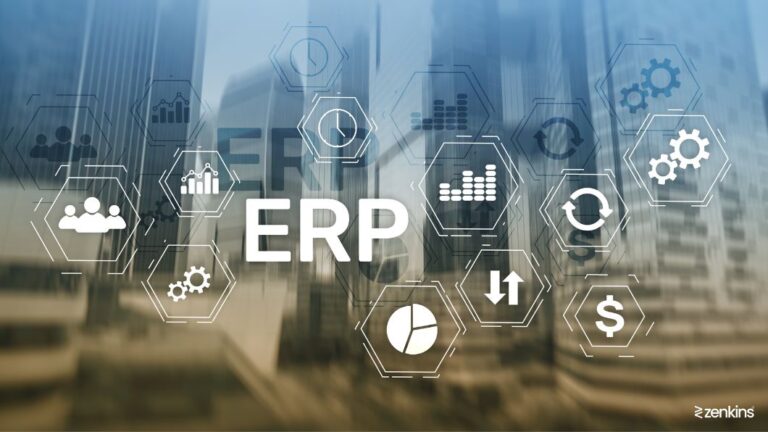Table of Contents
Digitizing Work Permits in Manufacturing: A Smart Approach to Safety Compliance
In today’s fast-paced manufacturing environment, safety, compliance, and operational efficiency must work together seamlessly. One area where many factories still lag is in the manual work permit process—often paper-based, inefficient, and risky.
Forward-thinking companies are solving this by adopting digital work permit systems, bringing automation, visibility, and control to the permit-to-work process. In this blog, we’ll explore why digitizing work permits matters, how it supports compliance, and how solutions like Zenkins’ Online Work Permit System are leading the way for manufacturers.
Work permits in the manufacturing industry are a vital component of occupational safety and operational discipline. These permits are not related to immigration or employment visas—instead, they refer to internal safety work permits issued before performing certain tasks on the shop floor.
Whether it’s a welding job, maintenance inside a confined space, or working at heights, manufacturing companies use work permit systems to ensure safety, avoid accidents, and meet compliance standards. In this step-by-step guide, we’ll walk you through how to apply and manage work permits effectively in a manufacturing environment.
What Is a Work Permit in the Manufacturing Industry?
A work permit in manufacturing is a formal written authorization that allows employees or contractors to perform specific tasks under predefined conditions (such as maintenance, welding, electrical work, or confined space entry). It’s an integral part of any Permit-to-Work (PTW) system, designed to identify risks, assign responsibilities, and implement necessary safety precautions.
It’s a formal process to ensure that:
- The job is clearly defined
- Risks are identified and mitigated
- The right people approve the work
- Safety procedures and PPE are enforced
Common Types of Work Permits in Manufacturing
Manufacturing companies typically use various types of permits based on the nature of the job:
- General Work Permit – For routine tasks not classified as high-risk
- Hot Work Permit – For activities like welding, cutting, or grinding
- Cold Work Permit – For mechanical work without ignition sources
- Electrical Work Permit – For working on energized or de-energized electrical systems
- Confined Space Entry Permit – For entering tanks, vessels, or tunnels
- Height Work Permit – For jobs above ground level
- Non-Routine Work Permit – For unique or one-time activities requiring special review
- Excavation Permit – For digging or trenching activities

Problems with Manual Work Permit Systems
Manual or paper-based work permits are still common but come with serious drawbacks:
- Delayed approvals
- Lost paperwork
- Difficulty in tracking active/inactive permits
- Poor audit readiness
- Risk of unauthorized work execution
- Inconsistent safety documentation
In high-risk manufacturing zones, manual errors can lead to incidents, fines, or production delays.
Step-by-Step Process to Apply for a Work Permit
Step 1: Identify the Type of Work and Its Risk Level
Before any task is initiated, the supervisor or site-in-charge must:
- Assess the nature of the job
- Identify associated hazards (fire, chemical, mechanical, etc.)
- Determine the correct type of work permit
This assessment forms the foundation for selecting safety protocols.
Step 2: Fill Out the Work Permit Application Form
A standard work permit form includes:
- Job description
- Work location
- Permit type
- Start and end time
- Personnel involved
- Tools and materials used
- PPE (Personal Protective Equipment) requirements
- Hazard controls (e.g., fire watch, gas detection)
Zenkins can help digitize this process with customizable E-Work Permit Systems for easier tracking and approval.
Step 3: Conduct Risk Assessment (JSA or HIRA)
For non-routine or hazardous work, attach a Job Safety Analysis (JSA) or Hazard Identification and Risk Assessment (HIRA). This ensures all foreseeable risks are documented and mitigated.
Step 4: Approvals and Authorization
The filled permit must be:
- Reviewed and signed by the supervisor or safety officer
- Approved by an authorized person (shift in-charge or operations head)
- In some cases, contractor and maintenance departments must also sign
Digital workflows, like those from Zenkins, can streamline multi-level approval processes through mobile or desktop dashboards.
Step 5: Pre-Work Safety Checks and Toolbox Talk
Before starting the job:
- Conduct a toolbox talk with the involved personnel
- Verify PPE and isolation measures
- Ensure atmospheric testing for confined spaces or enclosed areas
- Mark danger zones with appropriate barricades
Step 6: Execute the Work Within the Permit Validity
- The work must be performed within the time window specified in the permit
- Any changes (extension, scope, personnel) require reauthorization
- Safety observers may be assigned for hot or confined space work
Step 7: Closure and Handover
Once the work is completed:
- The area should be cleaned and inspected
- All safety devices (LOTO tags, barricades) must be removed
- The supervisor must sign off the closure section of the permit
- The permit is then filed or archived for audit purposes
Zenkins offers secure storage and audit trail features to manage permit history digitally.
Benefits of a Digital Work Permit System in Manufacturing
Manual work permit systems are prone to:
- Delays in approvals
- Miscommunication among teams
- Lost paperwork
- Audit non-compliance
By using a digital work permit solution, you can:
✅ Reduce processing time
✅ Ensure real-time visibility of permits
✅ Send automatic alerts for expiry or renewals
✅ Maintain compliance with ISO, OSHA, and safety audits
✅ Generate reports and analytics for management
Why Zenkins’ Online Work Permit System Is the Smart Choice
Zenkins’ Online Work Permit System is a robust, cloud-based solution built specifically for industrial safety teams and plant operations.
Key Features:
- Customizable permit types: hot work, electrical, confined space, and more
- Role-based access and approval workflows
- Integration with safety checklists, risk assessments, and IoT devices
- Auto-reminders for permit expiry and renewals
- Mobile app for supervisors, workers, and safety officers
- Real-time analytics and permit dashboards
- Secure data logging for audit readiness
Whether you’re a factory floor manager, safety lead, or plant head—Zenkins helps ensure that no high-risk job starts without proper control.
Smart Compliance in the Industry 4.0 Era
In the age of automation and data-driven manufacturing, relying on spreadsheets and paper permits is outdated and dangerous. A digitized work permit system is a core part of modern EHS (Environment, Health & Safety) compliance. It ensures that:
- Operations remain smooth and efficient
- Everyone is accountable
- Safety is not compromised
Final Thoughts
An effective work permit system is more than paperwork—it’s a proactive approach to protect lives, reduce downtime, and meet regulatory standards. With increasing complexity in manufacturing processes, having a digitized and automated permit-to-work solution is not just smart—it’s essential.
At Zenkins, we help manufacturing companies modernize their safety and compliance workflows with smart, scalable solutions.
👉 Explore the product here: https://zenkins.com/products/online-work-permit-system/
💬 Need a Digital Work Permit System for Your Plant?
Contact Zenkins today for a demo of our smart manufacturing compliance tools.





